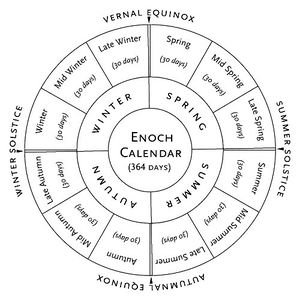Difference between revisions of "Category:Calendar (subject)"
Jump to navigation
Jump to search
| Line 21: | Line 21: | ||
==References== | ==References== | ||
* '''Calendars''' / [[Matthias Henze]] / In: [[T&T Clark Encyclopedia of Second Temple Judaism (2020 Stuckenbruck, Gurtner), edited volumes]] | |||
*'''Calendars''' / [[Francesca Rochberg-Halton]], and [[James C. VanderKam]] / In: [[The Anchor Bible Dictionary (1992 Freedman), dictionary]], 1:810-820 | *'''Calendars''' / [[Francesca Rochberg-Halton]], and [[James C. VanderKam]] / In: [[The Anchor Bible Dictionary (1992 Freedman), dictionary]], 1:810-820 | ||
*'''Calendars''' / [[Jonathan Ben Dov]] / In: [[The Eerdmans Dictionary of Early Judaism (2010 Collins / Harlow), edited volume]], 457-460 | *'''Calendars''' / [[Jonathan Ben Dov]] / In: [[The Eerdmans Dictionary of Early Judaism (2010 Collins / Harlow), edited volume]], 457-460 | ||
==External links== | ==External links== | ||
Revision as of 08:28, 14 June 2021
Calendar
Overview
The solar calendar was made of 364 days (360+4), or 52 weeks.
Each month has 30+1 days.
Each seasons has 91 days, or 13 weeks.
Because there is a discrepancy between the astronomical year (365 days) and the calendrical year, a week (or more weeks) were added, when necessary.
Yom Kippur was the Major festival as the Holiest Person (the High Priest) enters the holiest place in the Temple in the holiest day of the year. The universe regains its balance and has a new beginning, Therefore sins are forgiven and evil is erased.
External links
References
- Calendars / Matthias Henze / In: T&T Clark Encyclopedia of Second Temple Judaism (2020 Stuckenbruck, Gurtner), edited volumes
- Calendars / Francesca Rochberg-Halton, and James C. VanderKam / In: The Anchor Bible Dictionary (1992 Freedman), dictionary, 1:810-820
- Calendars / Jonathan Ben Dov / In: The Eerdmans Dictionary of Early Judaism (2010 Collins / Harlow), edited volume, 457-460
External links
Pages in category "Calendar (subject)"
The following 12 pages are in this category, out of 12 total.
1
- Fasti sacri; or, A Key to the Chronology of the New Testament (1865 Lewin), book
- The Calendar of Enoch and Jubilees (1891-92 Bacon), essay
- Die Solstitien im Kalender des Jubiläenbuches und in äth.Henoch 72 (1962 Kutsch), essay
- The Date of the Last Supper (1965 Jaubert), book (English ed.)
- Calendar and Chronology, Jewish and Christian (1996 Beckwith), book
- Calendars in the Dead Sea Scrolls: Measuring Time (1998 VanderKam), book
2
- Calendar and Community: A History of the Jewish Calendar (2001 Stern), book
- The Role of the Solar and Lunar Calendars in the Redaction of the Psalms (2002 Chyutin), book
- Calendar, Chronology and Worship (2005 Beckwith), book
- Le Temps et les Temps dans les littératures juives et chrétiennes au tournant de notre ère (2006 Grappe/Ingelaere), edited volume
- Land and Calendar: The Priestly Document from Genesis 1 to Joshua 18 (2009 Guillaume), book
- Calendrical Variations in Second Temple Judaism (2012 Saulnier), book
Media in category "Calendar (subject)"
The following 2 files are in this category, out of 2 total.
- 1957 * Jaubert.jpg 364 × 499; 21 KB
- 2008 * Ben-Dov.jpg 1,003 × 1,500; 68 KB


